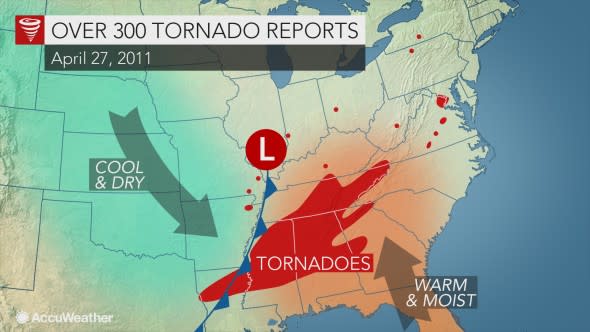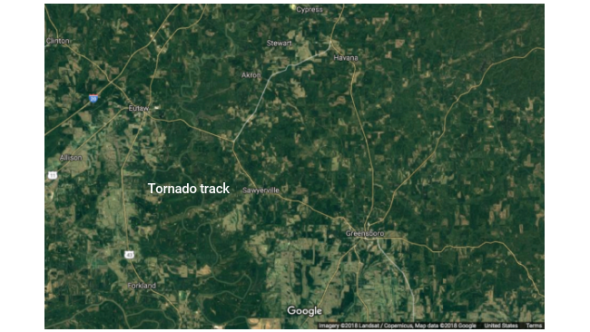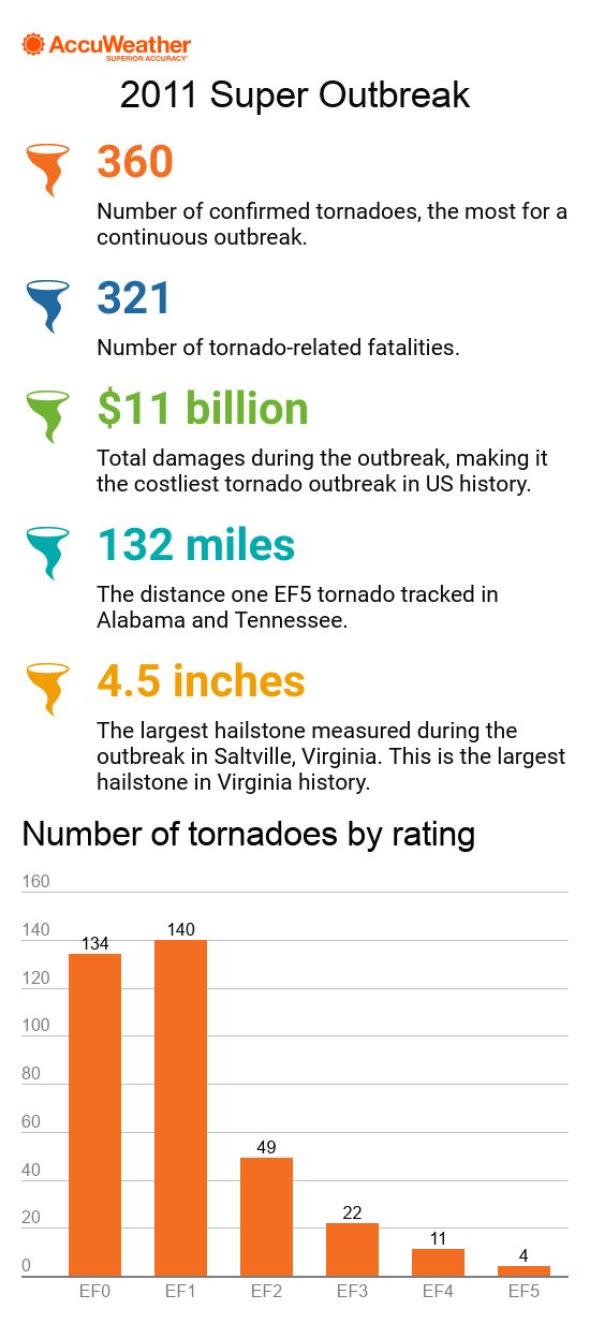Photos: Devastating tornado scars still visible from aerial views years after 2011 Super Outbreak
The end of April marks the anniversary of the 2011 Super Outbreak, one of the most devastating and deadly tornado outbreaks in the history of the United States.
Between April 25 and 28, severe thunderstorms spawned tornadoes in over a dozen states in the eastern U.S. with some of the most violent twisters touching down on April 27, 2011.
"April 2011 was one of the most active, destructive and deadly tornado months on record for the United States, and could become the benchmark that future months will be compared to," NOAA said.
Hundreds of tornadoes were reported during this outbreak which impacted areas from Texas to Florida and as far north as New York with the worst weather focusing on the Deep South.
Quiz Maker - powered by Riddle
The long-duration outbreak was the result of a vigorous storm system in the central U.S., which tapped into the unstable, moisture-rich air from the Gulf of Mexico.
"Between April 25th and 28th, one of the largest, deadliest and most destructive tornado outbreaks in U.S. history struck the eastern third of the nation," NOAA said.
The outbreak reached its peak on April 27 when severe storms swept across the Deep South, including much of Mississippi, Alabama and Tennessee.
On that day alone, there were around 300 tornado reports across the region, accounting for a majority of the total number of tornado reports throughout the entire outbreak.
By the time the 2011 Super Outbreak had come to an end, there were over 321 fatalities, with 238 in Alabama alone, and thousands more injured.
The Super Outbreak in addition to other tornado outbreaks earlier in the month resulted in a monthly tornado-related death toll of 369 people.
"April 27, 2011, marks the deadliest tornado day since March 18, 1925 when 747 people were killed by tornadoes," NOAA said.

Some of the most violent twisters tracked across Alabama on April 27, including the Tuscaloosa-Birmingham tornado.
The EF4 tornado was on the ground for over 80 miles and tracked directly through Tuscaloosa and the western suburbs of Birmingham, leading to 65 fatalities.
Houses were leveled and large swaths of debris were spread across the area, leaving some locations in the path of the twister almost unrecognizable.
An even more powerful tornado spawned to the north, touching down near Hamilton, Alabama, and continuing for over 130 miles before dissipating several hours later near Huntland, Tennessee.
This was one of four EF5 tornadoes during the outbreak and was powerful enough to debark trees and scour pavement from a road. This was also the deadliest tornado of the entire outbreak, leading to 72 fatalities in Alabama.
Not only did the tornadoes during the Super Outbreak devastate communities, but they tore through hundreds of miles of fields and forests, stripping vegetation of its leaves and uprooting some trees.
The scars left behind by the most powerful twisters are still able to be seen from aerial views to this day as the land continues to recover.

The path of an EF3 tornado is still visible from space. The tornado first touched down northwest of Forkland, Alabama, then tracked on the ground for over 70 miles through Sawyerville and east of Havana. (Image/2018 Landsat/Copernicus, Map data 2018 Google)
On April 27, 2011, an EF4 tornado tracked through Tuscaloosa, Alabama. The satellite image on the left shows the area one month after the tornado hit. The satellite image on the right shows the area five years after the tornado hit.
By the time the storms ended, there had been 362 confirmed tornadoes in the eastern U.S.
"The total of 362 tornadoes that spawned during this four-day period not only surpassed the previous record for all of April by nearly 100, but also accounted for almost half of the confirmed tornadoes during the month," NOAA said.
The number of tornadoes in April 2011 also helped to make that year one of the most active years for tornadoes in the U.S.
According to the Storm Prediction Center, there were 1,897 tornado reports across the U.S. in 2011, well above the annual average in the country.
Cleanup and recovery following the 2011 Super Outbreak took years in some of the hardest-hit areas as some neighborhoods had to rebuild their homes from the ground up.
"Between April 25 and 28, the outbreak violently struck the southeastern U.S., resulting in roughly $11 billion in damages," NOAA said.
Debris cleanup in Tuscaloosa, Alabama, alone was estimated to cost $100 million.
"Because of the April 2011 disasters, more than $115 million in federal funds was set aside for local and state projects designed to save lives, protect property and save money for all in the long run," FEMA said.

